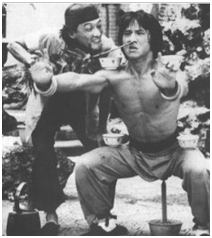Embrace The Suck
There’s an old Chinese proverb that if I were to paraphrase rather badly, goes something like this:
“In order to do learn kung fu, you must be prepared to eat bitter”.
Now here, “kung fu” refers to the literal meaning of the word – skilled attained through time, study, and hard work. So technically you can have kung fu in baking a cake, or mowing the lawn, or of course, kicking ass and taking names.
When I first heard this, it was in the context of my kung fu class (the contemporary martial arts-y kind) and we were training by holding stances. Now, for those of you who don’t know what this means, what you basically do is hold different stationary positions like the Horse Stance (kinda like a squat but not as low) or the Bow-and-Arrow Stance (kinda like a lunge but not as deep and your back leg straight) and you hold those poses for different lengths of time. There are many different reasons for this practice – some physiologically sound, some traditional/cultural, some not so much – but one of the most oft cited reasons will be that this teaches the student to develop patience and tests their commitment to the training.
But kung fu or martial arts isn’t the only activity that has this kind of “torturous” training (now I’m putting torturous in quotations for a reason, stay tuned). Anyone play an instrument? Do you practice the scales? What about playing basketball? Do you still practice dribbling? What about learning a new language or doing math? How many “basic” practice questions/problems did you do and for how long until these basics became natural and second nature?
I think no matter what you are doing, if you want to get GOOD, then you have to put some time in to the basic, often drudgery-like, sometimes painful, almost always mentally and emotionally taxing practice of whatever constitutes the elemental components of your art/craft/activity. This practice, the actual doing of the practice is what’s called “eating bitter” because, oh yes, holding stances or doing the scales gets to be quite bitter tasting after a while.
Recently I came across an article that uses a different phrase that’s more fitting for the times, but still embodies the same message. Over at Coding Horror, Jeff Atwood, the blogger and cofounder of Stack Overflow, uses the term “Embrace the Suck”. He says that although we all want to be awesome at something, before you can achieve greatness you have to start out by sucking. And “the only thing that prevents us from being awesome is our own fear of sucking”. So true. Because the sooner you embrace the suck, the sooner you get to become familiar to its feeling and get over the fear of feeling it. And when this happens, you actually end up not minding feeling sucky and you get to even, almost, maybe enjoy the activity that you suck at it. And that’s when the magic happens. You start to suck less at it.
But it all starts with embracing the suck.


